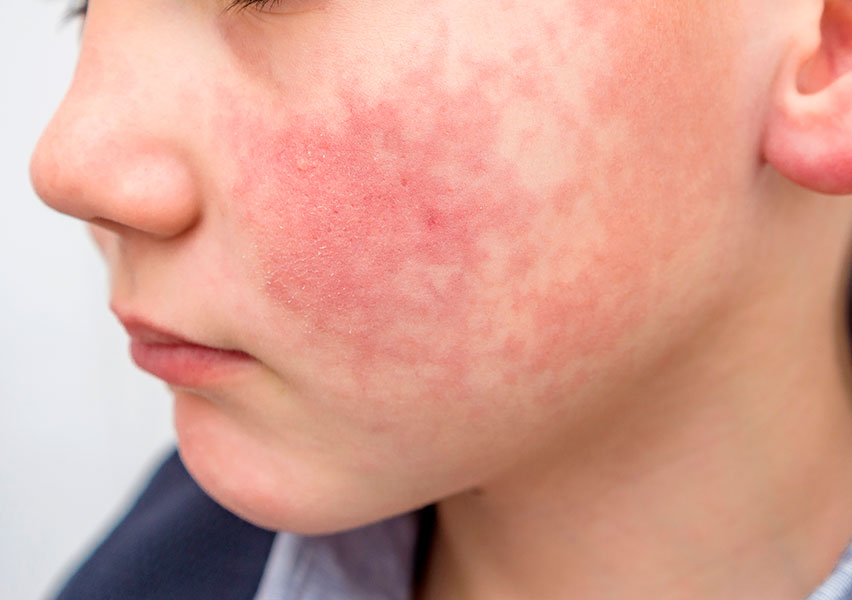Parvovirus
Parvovirus B19 is a small, non-enveloped, single-stranded DNA virus that belongs to the Parvoviridae family and exclusively infects humans. It was first discovered in 1974 in a blood donor during hepatitis B screening. The name “B19” originates from the coding of the blood donor panel (donor 19 from panel B). This virus is the etiological agent of erythema infectiosum, also known as the "fifth disease", a common and usually mild childhood illness characterized by a facial rash often referred to as the "slapped cheek" appearance. Infection with parvovirus B19 typically results in lifelong immunity.
Clinical characteristics:
Parvovirus B19 infection is highly contagious and widespread among children. In most pediatric cases, it presents with mild symptoms including low-grade fever, headache, nasal congestion, and general malaise. A few days after the initial symptoms, a distinctive bright red rash may appear on both cheeks, giving rise to the “slapped cheek” sign. This rash may then spread to the trunk, arms, buttocks, and thighs in a reticular (lace-like) pattern and may be itchy, particularly on the soles of the feet. The rash can come and go over the course of three weeks and may be triggered by sunlight or temperature changes.
In adults, the disease is often more subtle, with rash being less common. The hallmark symptom in this group is arthralgia or arthritis, particularly affecting the hands, wrists, knees, and ankles. These joint symptoms may persist from a few days to several weeks. In some individuals, especially those with weakened immune systems or underlying hemolytic anemias (such as sickle cell disease), the infection can lead to transient aplastic crisis, requiring urgent medical attention.
Parvovirus B19 infection during pregnancy poses a risk to the fetus, potentially leading to hydrops fetalis, severe anemia, or miscarriage, particularly if infection occurs during the first half of pregnancy.
Transmission:
The virus spreads primarily through respiratory droplets, especially via coughing and sneezing. It can also be transmitted through blood products and from mother to fetus. Infected individuals are most contagious before the rash appears, making prevention challenging.
Diagnosis:
Diagnosis is based on clinical presentation and can be confirmed by serological tests (detection of specific IgM and IgG antibodies) or molecular methods such as PCR, which detect viral DNA in blood or bone marrow samples. PCR is particularly useful in immunocompromised patients, in whom serological response may be absent or delayed.
Treatment:
There is no specific antiviral therapy for parvovirus B19. In healthy individuals, the infection is self-limiting and typically requires no treatment beyond symptomatic relief. In patients with severe anemia, blood transfusions may be necessary. Immunoglobulin therapy may benefit immunocompromised individuals with persistent infection. Monitoring and support are essential in pregnant women infected during early gestation due to potential fetal complications.

